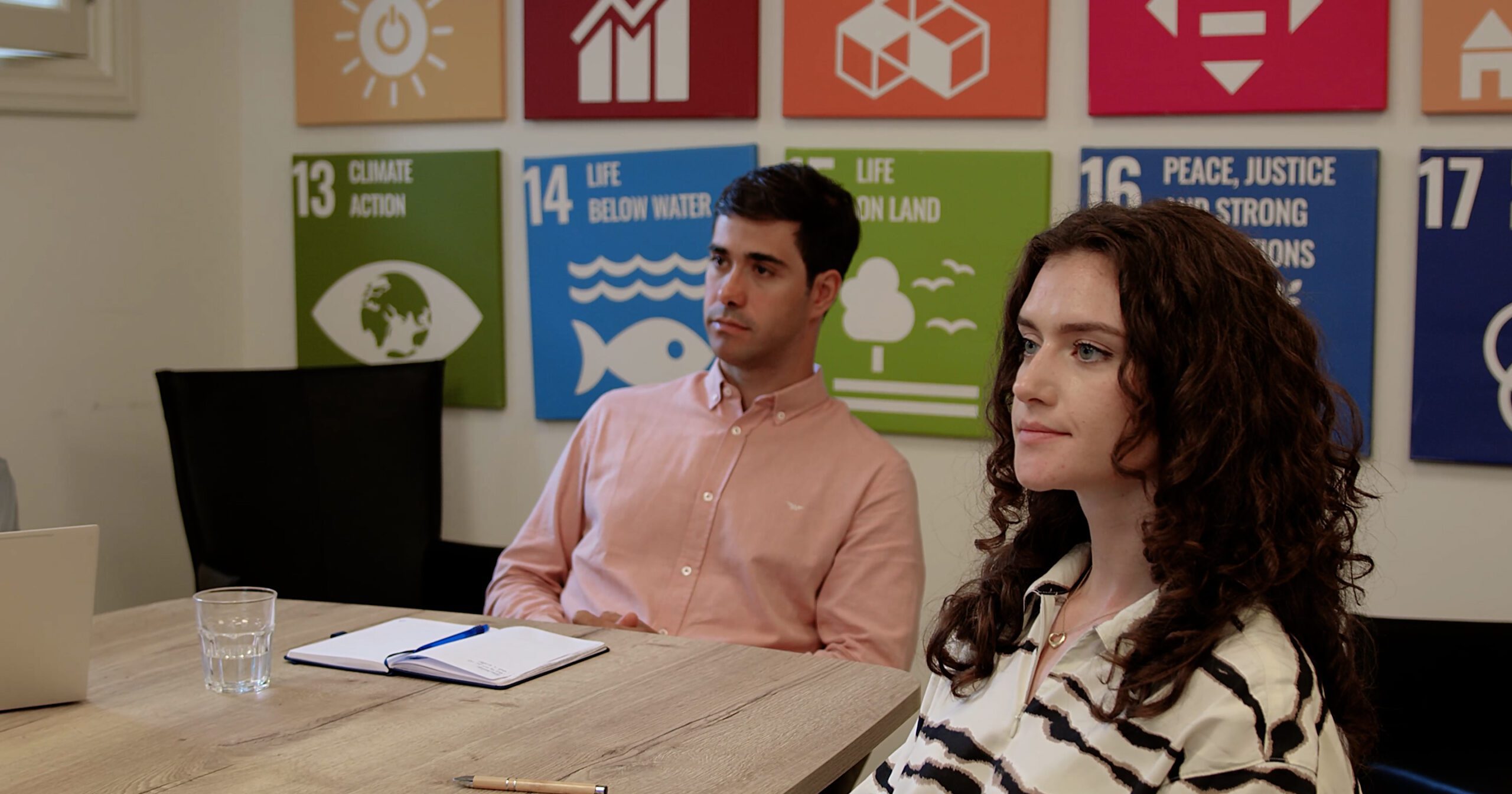Everything you need to know about SFDR Article 9
The Sustainable Finance Disclosure Regulation (SFDR), one of the EU’s latest sustainability governance efforts, is gaining more and more significance in the Finance industry. For most investment funds, it is mandatory to comply, and in order to do that it is first important to understand the regulation’s different Articles (a.k.a. categorisations), and the implications for your financial products.
First, we’ll start off by giving a high-over overview of SFDR. Then, we’ll dive into the different Articles and explain why Article 9 is so significant in sustainable finance. Third, we’ll explain how you could defend your position as an Art. 9 fund and finally, we’ll break down which situations it might make more sense for you to choose an Article 8 fund instead.
SFDR in a nutshell
SFDR is a framework established by the European Union (EU). It mandates that Financial Market Participants (FMPs) communicate the environmental and social repercussions of their transactions to relevant stakeholders. The goal is to prevent greenwashing, and to foster transparency and openness within the realm of sustainable finance transactions.
Read more about the basic principles of SFDR, including what defines a sustainable investment, in our blog ‘What is SFDR?’. Or jump straight into more practical advice on how to report in our blog ‘Navigating SFDR Disclosure: 11 Practical steps for Compliance’.
SFDR Articles
SFDR consists of 3 articles, also called categories:
- Article 6 addresses products without any sustainability objectives.
- Article 8 covers products that promote environmental or social characteristics alongside financial objectives.
- Article 9 is for products with a primary sustainable investment objective.
The aim of the different categories is to help investors understand the sustainability goals of their different products. Selecting the right category is essential to reflect the fund’s commitment to achieve the sustainability goals of their different products. Article 9 products embody a stronger commitment to sustainability, while Article 8 products also incorporate ESG considerations but alongside broader investment objectives. In principle, the higher the article number, the more disclosure is required in order for an investment to count as “sustainable” in the eyes of the EU.
Sustainable or not: Always identify risks
Article 8 & 9 are clearly the two key subcategories for sustainably-oriented investors. However, it is important to highlight that even if the FMP does not have sustainability ambitions and does not take any action regarding those risks and impacts, SFDR requires all FMPs to at least identify the sustainability risks they are subject to as an entity and the adverse sustainability impacts related to their financial products. In such cases the FMP will have to disclose why they do not have sustainability ambitions or are not taking actions against the identified risks.
For the remainder of the blog we’ll focus on the difference between Article 8 & 9, the key sustainability subcategories, and their implications for investors.

Article 8 & Article 9 products
SFDR differentiates sustainable financial products into 2 key subcategories: Article 8 and Article 9. These categories help investors in identifying investment products based on their ambition-level regarding sustainability. However, many investors struggle with the differentiation between the two articles.
A product-level differentiation
The financial market has 3 levels: The entity, the product and the investment. The Article 8/9 differentiation happens at product level, not investment or entity level.
So what counts as a financial product? A product is a bundle or portfolio of investments and can come in many different formats. The most common one is a Fund. It is the structure of these products that determine whether investments should be considered Article 8 or 9.
What is the difference?
Article 8 products are labelled as “products promoting environmental or social characteristics”, but their primary goal need not be explicit sustainability. They actively consider the environmental or social impact of their investments, but it is not considered as an objective.
Article 9 products on the other hand have a clear objective of generating a positive sustainable impact, adhering to specific environmental or social goals. Investors seeking high sustainability ambitions should consider Article 9 funds.
Article 9 requirements:
- The primary investment objective is sustainability
- There is no significant harm done to other environmental- or social objectives
- Information about sustainability characteristics and their impact is transparently disclosed
In summary, Article 9 products embody a stronger commitment to sustainability, while Article 8 products also incorporate ESG considerations but may have broader investment objectives. Naturally, Article 9 products require more disclosure than Article 8 products. It is up to investors themselves to decide how they are going to prove adherence to the Article 9 requirements.
Sustainable Finance Explained: SFDR's Article 8 & 9
Why and how to defend your position as an Article 9 product?
Some investors wonder why they should bother choosing to categorise their fund as Article 9 over Article 8. That is, Article 9 means more disclosure and more ‘hassle’ to prove one’s sustainable objectives. However, it is important to note that Article 9 products come with several advantages:
- The most favourable terms for transaction in the finance market.
- Proves a stronger commitment to sustainability to stakeholders, enhancing reputation and opening up more pools of capital.
- Enhanced governance stability and identification of sustainability risks.
Because of these favourable consequences, an Article 9 product is definitely worth fighting for. To do so, keep in mind that alignment is your own responsibility, and that it is therefore a good idea to start collecting data to prove it.
Alignment remains your responsibility
In contrary to Article 8 products, Article 9 funds must continue to ensure that all the companies they invest in are EU Taxonomy-aligned. However, not all companies report on their own alignment, as it is not mandatory (yet). Therefore, FMPs have the responsibility of defining themselves whether and why a company they invest in can be considered aligned.
Read more about the relationship between Article 9 and the EU Taxonomy here.
Start collecting data
To make such an assessment, FMPs can build their own frameworks or methodologies, or abide by already established frameworks. For example, funds focused on CO2 emissions-reduction must use EU Paris-Aligned Benchmarks to measure this, such as the Science-Based Targets initiative.
Of course, measurement can be a challenging task, given varied KPIs and different data collection methodologies. Therefore, it is important that you carry out a valid, standardised assessment and gather as much data and evidence as possible that supports your assessment. This evidence will then defend your opinion and validate it in the face of any uncertainties or potential changes to the regulation.
For more tips regarding defending your Article 9 position see this PitchBook article.
When is Article 8 more sensible?
Due to the evolving nature of the regulations and the inherent complexity in defining what is a sustainable investment, some funds are choosing an Article 8 categorisation as a more cautious approach. They are worried they won’t qualify for Article 9. Recently, we have even seen some larger asset managers having their funds reclassified from Article 9 to Article 8, for fear of being accused of greenwashing, despite their best efforts and the many resources they have at their disposal to get this right.
Not more or less sustainable
Article 9 is not only a measure of sustainability – it primarily showcases how transparent the fund is. Therefore, it may not always be the case that an Article 8 fund is “less sustainable” than an Article 9 fund – it could be simply due to the fact that the fund does not disclose as much information, despite the fact they have sustainable investment objectives.
Consider your capacity, expertise, and risk tolerance
This is often the case for smaller funds with less administrative capacity. The administrative effort it requires to be categorised as an Article 9 fund can be burdensome and time consuming, and therefore it may simply not be in the best interests of funds with limited resources.
Furthermore, they may not have the in-house expertise to understand the complex standards, therefore attempting to be Art. 9 despite being uncertain could be risky due to the potential for accusations of greenwashing. In this case, it may be best to stick to an Article 8 categorisation, but nevertheless invest according to sustainable targets.
Conclusion
In this exploration of SFDR Article 9, we’ve delved into the heart of sustainable finance regulation. Understanding the distinctions between Article 8 and Article 9 is vital for investors navigating this complex landscape. Article 9 products signify a strong commitment to sustainability and demand more disclosure, offering benefits like favourable market terms and enhanced governance stability.
For investors, the choice between Article 8 and Article 9 hinges on capacity, expertise, and risk appetite. Smaller funds with limited resources may find Article 8 a pragmatic option, while larger ones can champion transparency as Article 9 products. Regardless of your choice, aligning with sustainability objectives remains paramount, and collecting robust data is your armour against uncertainty in this evolving regulatory environment.
Any questions?
At Sustainable Capital Group, we understand the complexities of EU regulations in sustainable finance, and our sector experts are here to assist you. For personalised guidance, simply fill out our contact form, and we’ll be in touch with you shortly.



